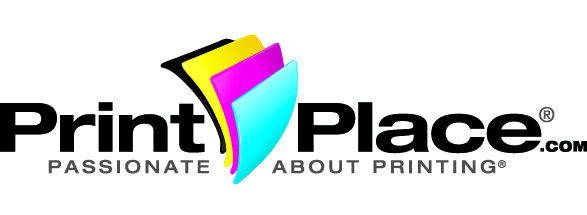Graphic Design Tip: Resolution for Print and Web
Today’s graphic design video covers resolution and DPI. What exactly do these terms mean? And more importantly, how can they improve the look of your printing? Our graphic designer, Chambley, has the answers to both. She explains why having the correct DPI makes a huge difference in the look of any image. This is true when you are working on a web image, but even more important when you are creating an image for print.
PrintPlace.com wants your posters, flyers, and all your printing to look professional every time, so we are giving tips like this one, each week.
Learn what DPI you should use for web or print by watching our short video, or read the transcript below. Then come back next week for more food for your graphic brain.
Video Transcription
Welcome back for another quick tip from PrintPlace.com.
This week we’re going to discuss image resolution for print and web design. Whether you’re a graphic designer like me, or you’re hiring one, it’s really important to have a basic knowledge of how resolution affects your project, so let’s start off with a few definitions.
“DPI” is a term you’ve probably heard thrown around before. It stands for dots or pixels per inch. It’s a measurement of how many dots or pixels fit into one inch of space.
“Resolution” refers to relative sharpness of an image.
Here’s a solid rule of thumb when choosing images.
For print, use images at 300 DPI or greater, and for web, use images no lower than 72 DPI.
Here’s a typical situation. Let’s say you’ve been asked to create a company picnic flyer, and it needs to show your business logo. So, you grab an image off the company website and resize it to fill the page. Perfect! Except you’ve just used a 72 DPI graphic and magnified it 200% or more its original size. Depending on your monitor resolution, it may even look okay, but printed, the image will appear fuzzy, pixelated and just plain ugly.
Here’s some easy tools to determine your image’s DPI. If you have Photoshop, simply open the image in the program. Then, click “image” then “image size,” and you can see the image resolution here.
If you don’t have Photoshop, no problem. For Mac, double click on the image, or right click and open it with “preview.” Then click, “tools” and “show inspector.” You can see the DPI here.
For windows, right click on the image. Click “properties” then “details.” The image DPI is here.
One more quick illustration. Now that you know 300 DPI is best for print, you may be thinking can rescue your 72 DPI image by converting it up to 300. Let me show you why this doesn’t work. Starting with our same web sized logo in Photoshop, we’ll go back to image size. If you type 300 into the resolution box, you’ll notice the number of pixels change but the actual size of the image stays the same. In effect, you’re adding pixels where they don’t belong or fit. Again, the resulting image is fuzzy and completely unsuitable for printing.
So remember, especially for print, make sure your source image is as big as possible with the highest possible DPI. You can always scale down, but you can’t scale up.
That’s all for this week. Every week we’ll have a new tip on graphic design. Subscribe to stay updated on our newest videos. See you next Friday.

PrintPlace’s mission is to provide customers with unparalleled printing services through the knowledge and expertise of its employees.


